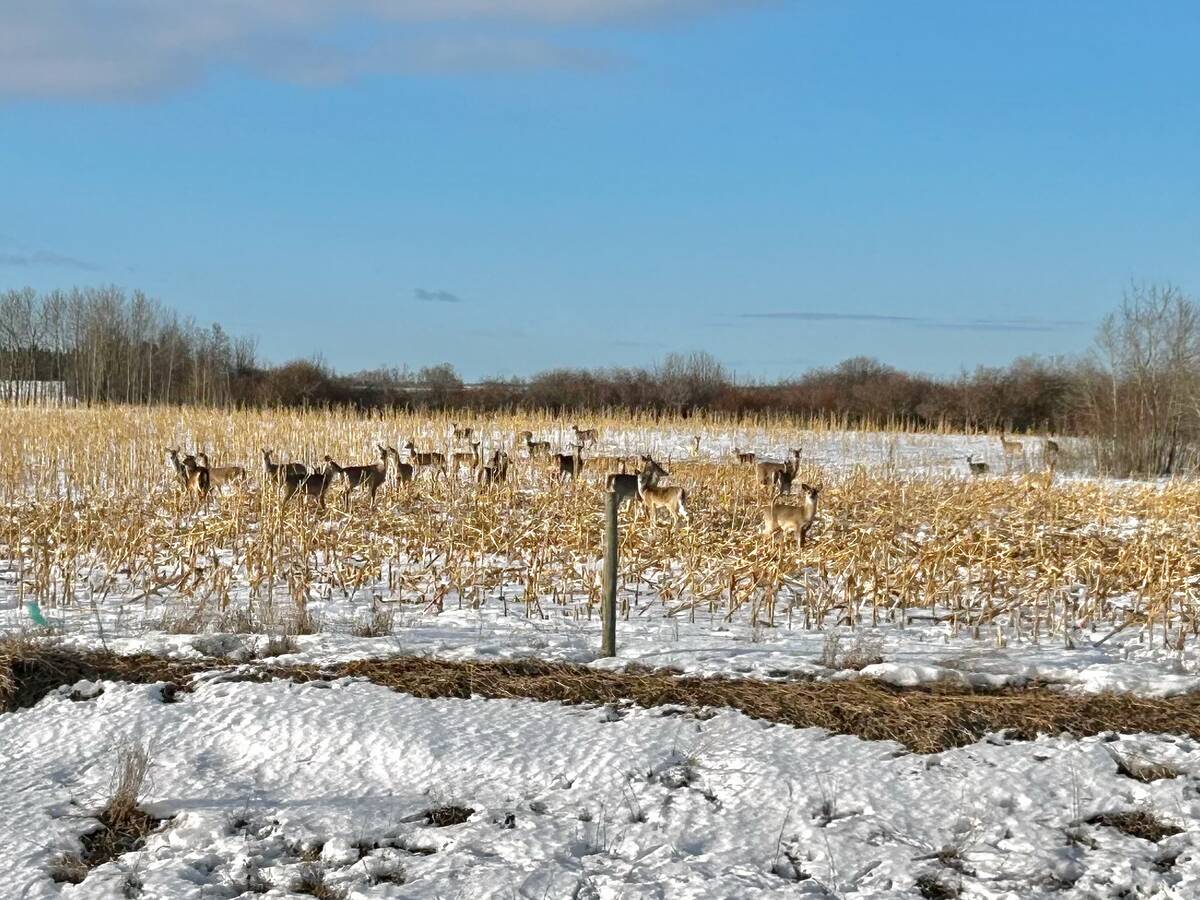Interswitching has been regulated since 1904 in Canada but in 2013 an exceptional harvest led to record-breaking grain production in Western Canada. The increased supply, combined with challenging weather conditions, overwhelmed the railways and led to significant delays in moving grain to export terminals.
In 2014, the Fair Rail for Grain Farmers Act reached Parliament in response. In it, there was a provision to increase the interswitching radius from 30 kilometres to 160 kilometres, the same increase promised in the last federal budget bill.
According to the Canada Gazette at the time, the goal of that section was to create a more competitive climate for Canada’s railways to support grain farmers.
Read Also

Five new CWD cases confirmed in Manitoba
Chronic wasting disease (CWD) has been found in five more Manitoba deer, including in two new municipalities without previous cases of the disease.
The measure was set to expire on Aug. 1, 2016.
EDITORIAL: Checks and balances needed
In February 2016, a broad review of the legislation was completed by former MP David Emerson. He concluded the radius should revert to its former distance, since few shippers had availed themselves of the extended limits.
At the same time, Emerson said lack of competition among railways was negatively affecting grain shippers. At a 2017 House of Commons standing committee meeting, he said the provision should have an end date, not because of the policy goal, but because it lacked breadth.
“You do get a tremendous amount of friction in the system that results from power imbalances between service providers and their customers. Interswitching is one small tool to help the agricultural sector with that,” he said at the time.
“Our view was that, yes, we should have provisions for interswitching. But over time, and I’m talking about over decades, we really should be not just focusing on interswitching as it relates to grain or as it relates to three provinces; we need to look at interswitching in a larger sense.”
Subsequent regulatory changes included a provision called Long-Haul Interswitching (LHI) that was intended to address Emerson’s call for “broader interswitching capacity.”
LHI allows shippers to access competing lines within a 1,200-kilometre radius, on the condition that they try to make arrangements with their local carrier to interswitch the traffic. They can apply to the Canadian Transportation Agency if they have tried to negotiate, but are not satisfied with the rate their local carrier charges or the service terms it offers.
The debate slid into the background for the next five years.
New crisis, new report, same recommendations
A drought in 2021 saw the railways allocate fewer container cars in anticipation of a much smaller harvest. But, as the year progressed, the railways weren’t meeting delivery targets.
According to a report on the 2021–22 crop year by Canada’s grain monitor, the issue was largely rooted in the slower return of empty equipment to the Prairies for reloading, which was a symptom of a growing international supply chain crisis.
Exacerbated by work shortages driven by COVID-19, flooding in British Columbia and a bitterly cold winter on the Prairies, grain shipments slowed to a trickle.
By May 2022, the situation had abated and shipments were largely caught up, but the crisis prompted Ottawa to establish the National Supply Chain Task Force. That task force released its report in October 2022.
One of the recommendations was to bring back extended interswitching for an 18-month pilot. That provision received royal assent on June 22 as part of an omnibus bill to implement items tabled in the March federal budget.
















